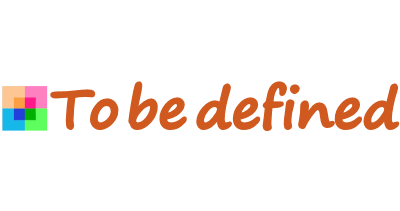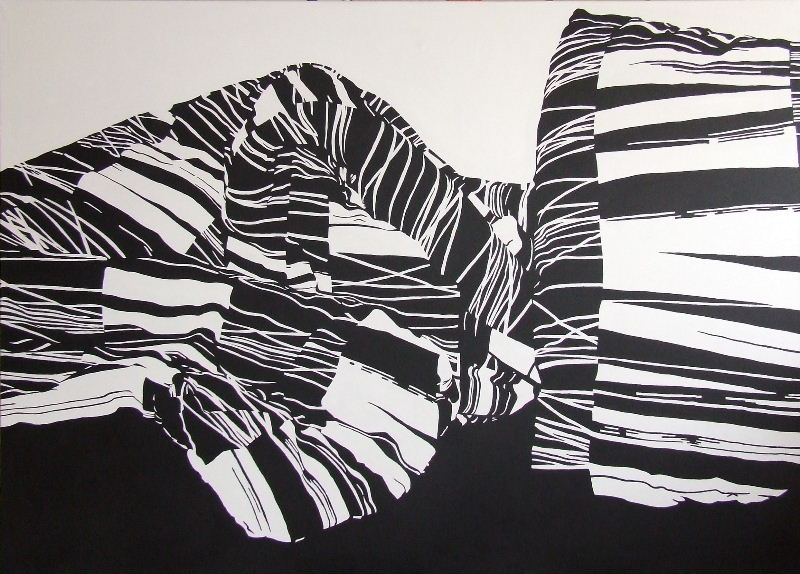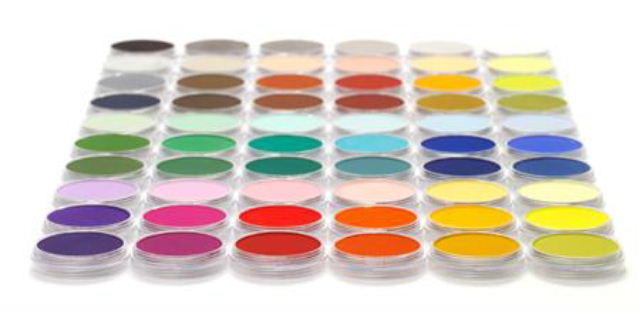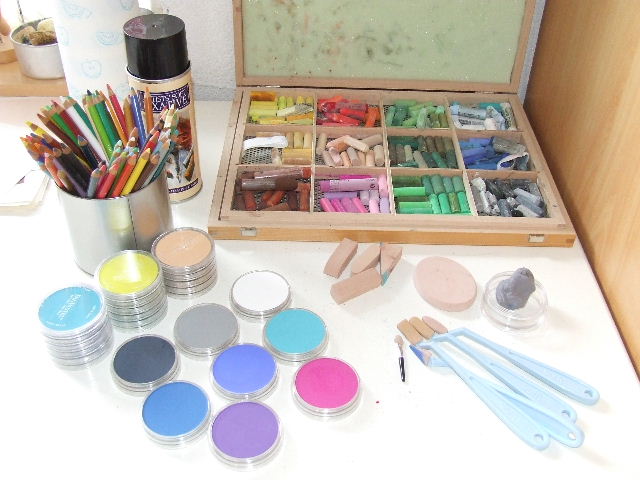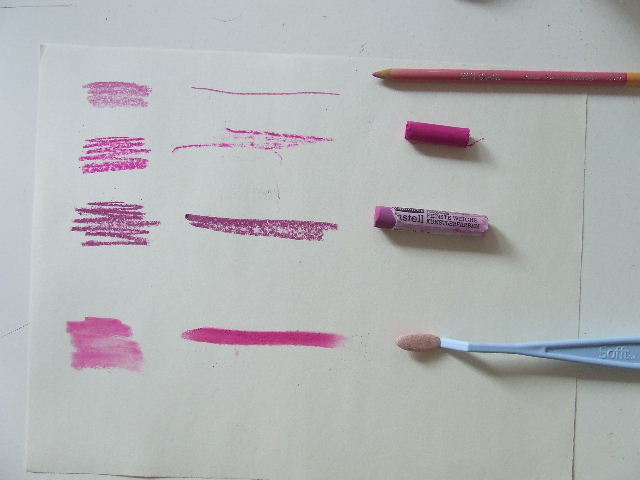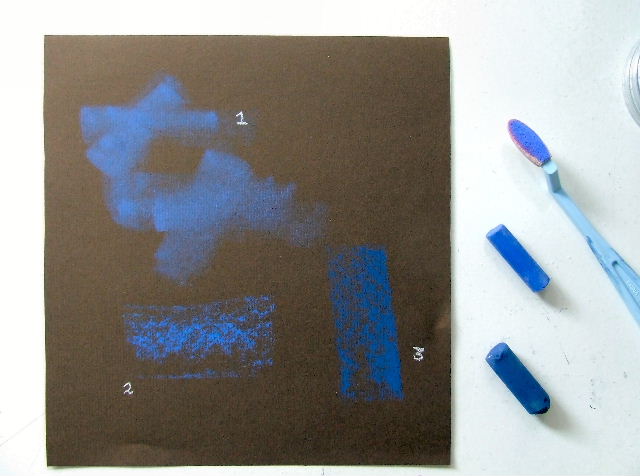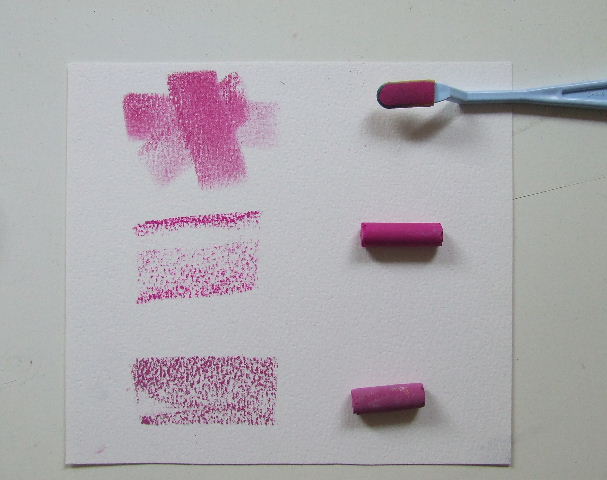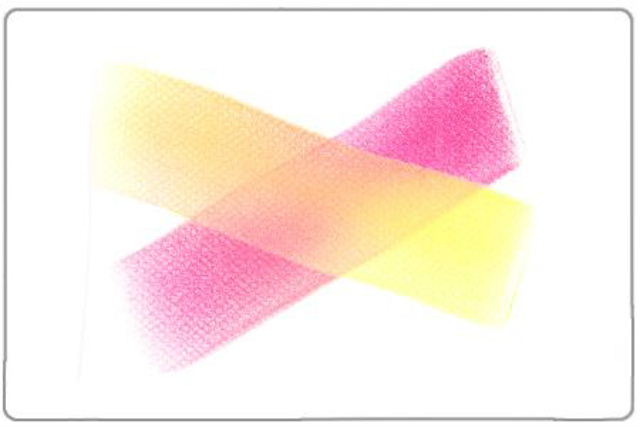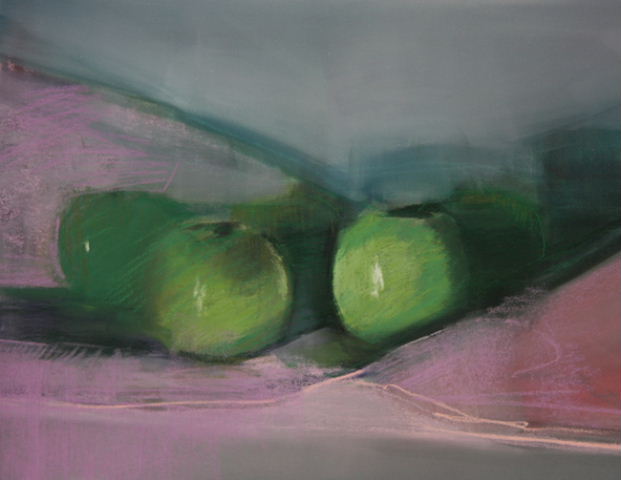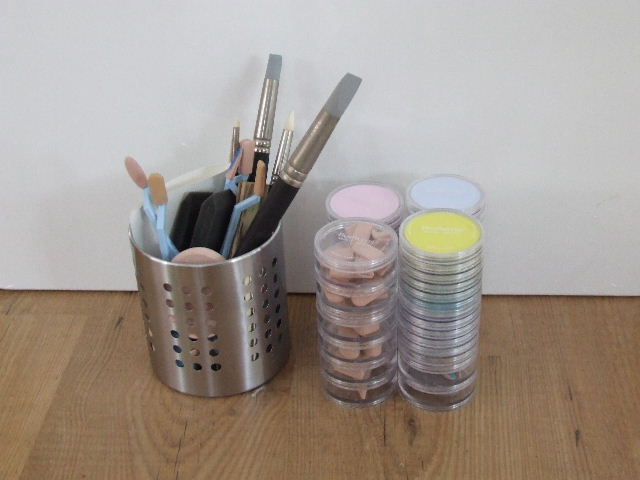PanPastel is applied using specially developed "Soft micropore sponge tools." These are small sponges in four different shapes, attached to a kind of handle and replaceable. There are also larger sponges in various shapes, providing a huge variety of possibilities. While you can work with your fingers, it's not recommended. The special sponges pick up more color and are more precise. The same goes for cotton swabs. Of course, you can use them, but they absorb relatively more pigment and give off less, resulting in less efficient use of PanPastel.
|
PanPastel also combines beautifully with traditional pastel chalk and pastel pencils, as it fully complements conventional pastel chalks and fixatives. PanPastel can also be used very effectively in combination with other traditional drawing materials such as squares, pencil, charcoal, and other types of chalk, watercolor, and acrylic paint. PanPastel is suitable for almost all (slightly roughened) types of paper.
|
Next to an area filled in with color, you see a line with, respectively:
- Pastel Pencil
- Talens pastel chalk (harder)
- Schmincke pastel chalk (softer)
- PanPastel
You can clearly see the unique character of the various types of pastel chalk. Pastel pencil is very suitable for thin lines and details. Pastel chalk, both Talens and Schmincke, is suitable if you want a coarser look in your work. PanPastel immediately gives the effect you get when blending or smudging pastel chalk. It's like painting with pastel chalk. Each form of pastel has its own unique properties. Together, they offer the user almost unlimited possibilities.
|
A major advantage of PanPastel is its economical use. You can see that PanPastel is less sensitive to the texture of the surface. This is due to the resilient sponge. As a result, you don't have to press as hard to get a completely opaque area. It also requires fewer actions. While with traditional pastel chalk, you still have to brush after applying the chalk to get an even opaque layer, with PanPastel, this happens in one action. Precisely because PanPastel is less sensitive to the texture of the surface, it also produces less dust, especially when working with large areas. And because there is less dust, it is easier to keep your artwork neat, something that can be quite challenging with pastel chalk, one of the annoying properties of traditional pastel chalk.
|
To avoid extra and unnecessary dust, it is better to apply multiple layers on top of each other than to try to get as much pigment as possible on your sponge. It is recommended to pass the sponge over the pastel 2 to 3 times for optimal color absorption. You can also create mixed colors by applying multiple layers on top of each other. Clean the sponge in between by wiping it from left to right over a piece of kitchen towel. This also keeps the sponge securely attached to the holder.
|
Of course, there are many more possibilities such as highlighting or erasing, working with multiple colors at once, blending or mixing colors, and stenciling. You can find these on the PanPastel website. There, you'll also find some beautiful artworks created with PanPastel..
|
When you're done working, cleaning up is a breeze. There's no need to close the boxes after using PanPastel, but the special packaging makes it very easy to quickly stack them on top of each other and store them very compactly. The sponges don't need to be washed immediately after use. You can wipe them with kitchen towels or tissues, but if they're very dirty, they can also be washed. Simply use a little warm water and soap for cleaning. After washing, lay the sponges on a tissue to dry.
|
After trying PanPastel, here are the benefits summarized:
- No special preparation needed; you can start using PanPastel right away.
- Quick and easy to clean.
- PanPastel can be completely erased.
- Ideal for layering technique.
- Economical to use.
- Cleaner to use than traditional pastel chalk.
The revolutionary new "PanPastel Colors" have enriched the world of pastel art and greatly expanded the possibilities. In my opinion, an application of pastel chalk that every pastel enthusiast should at least try. |
